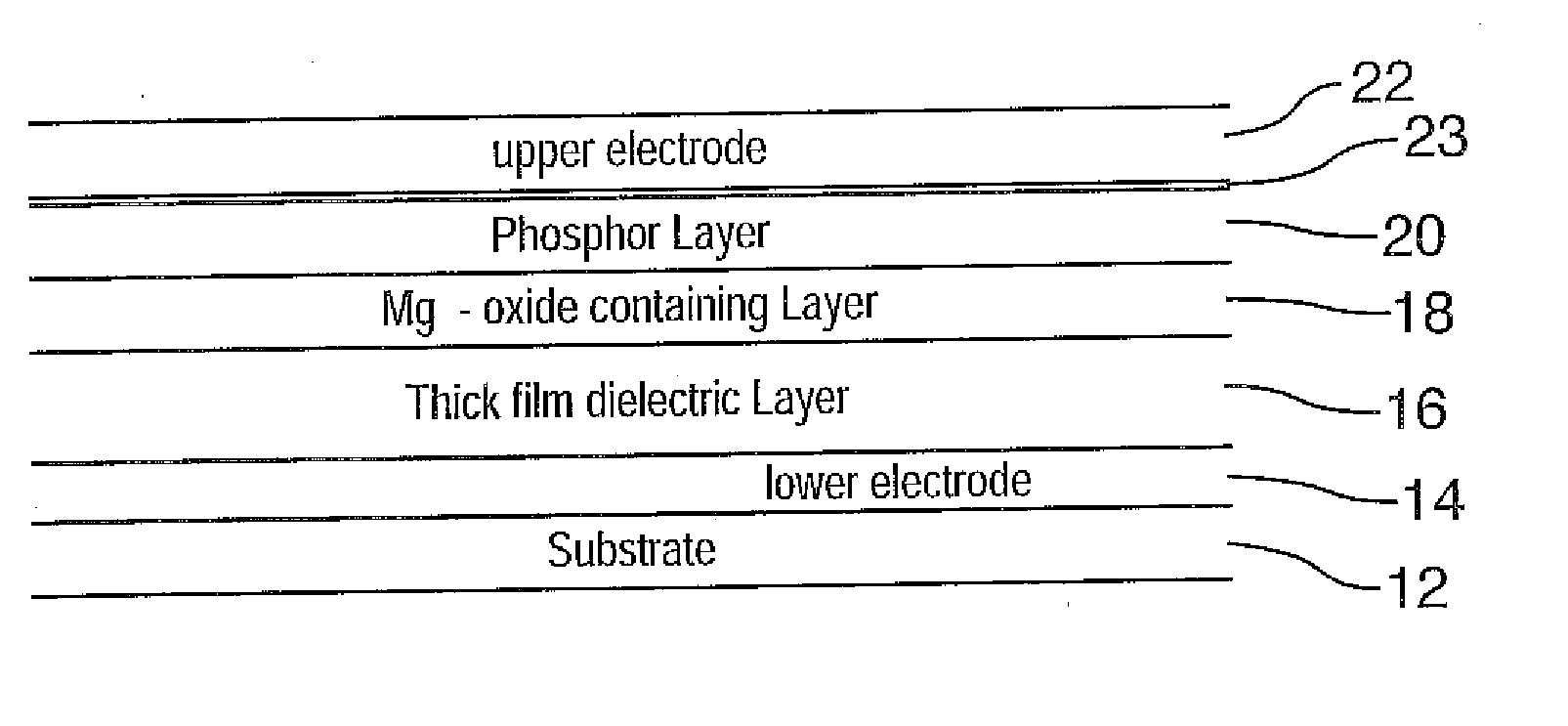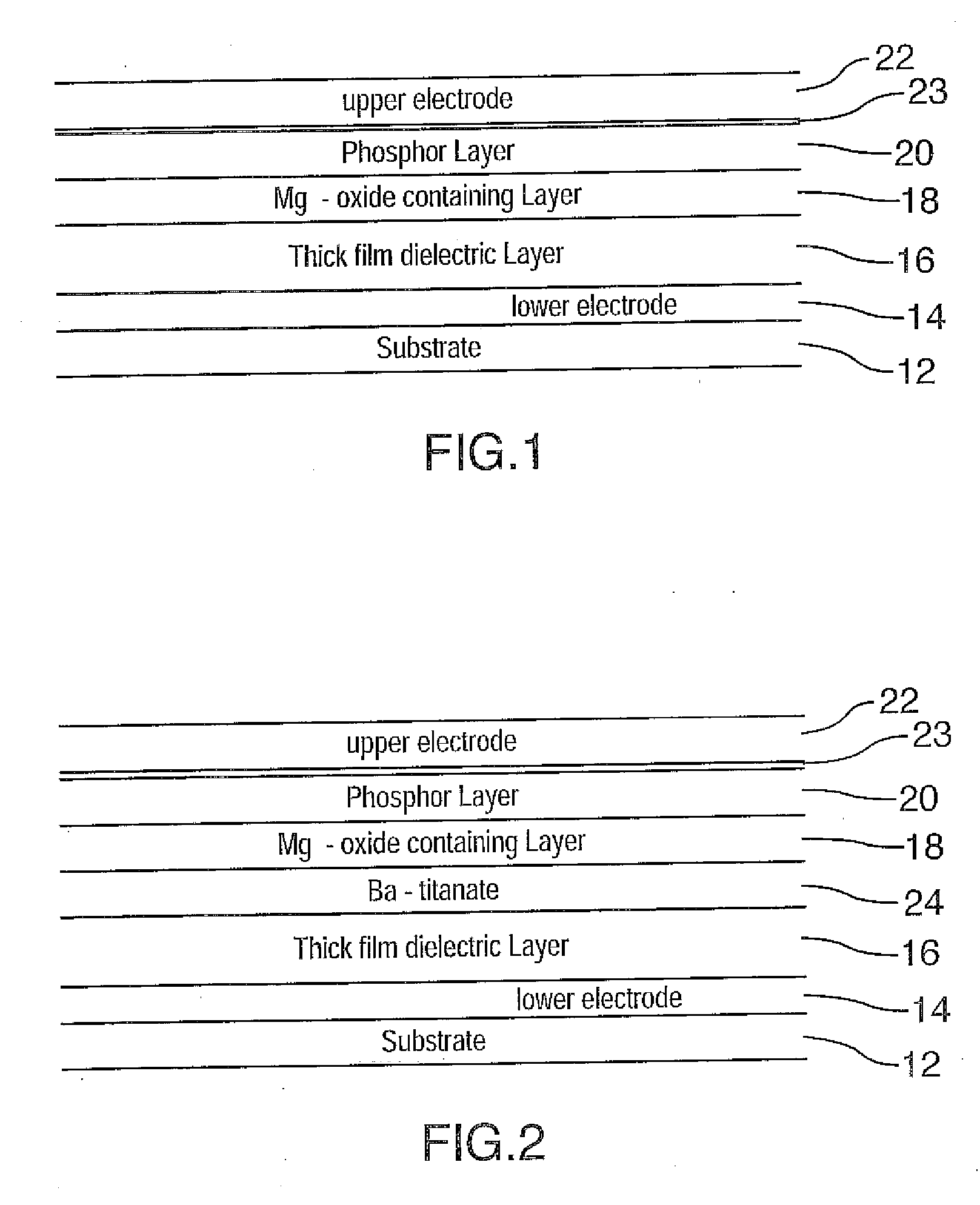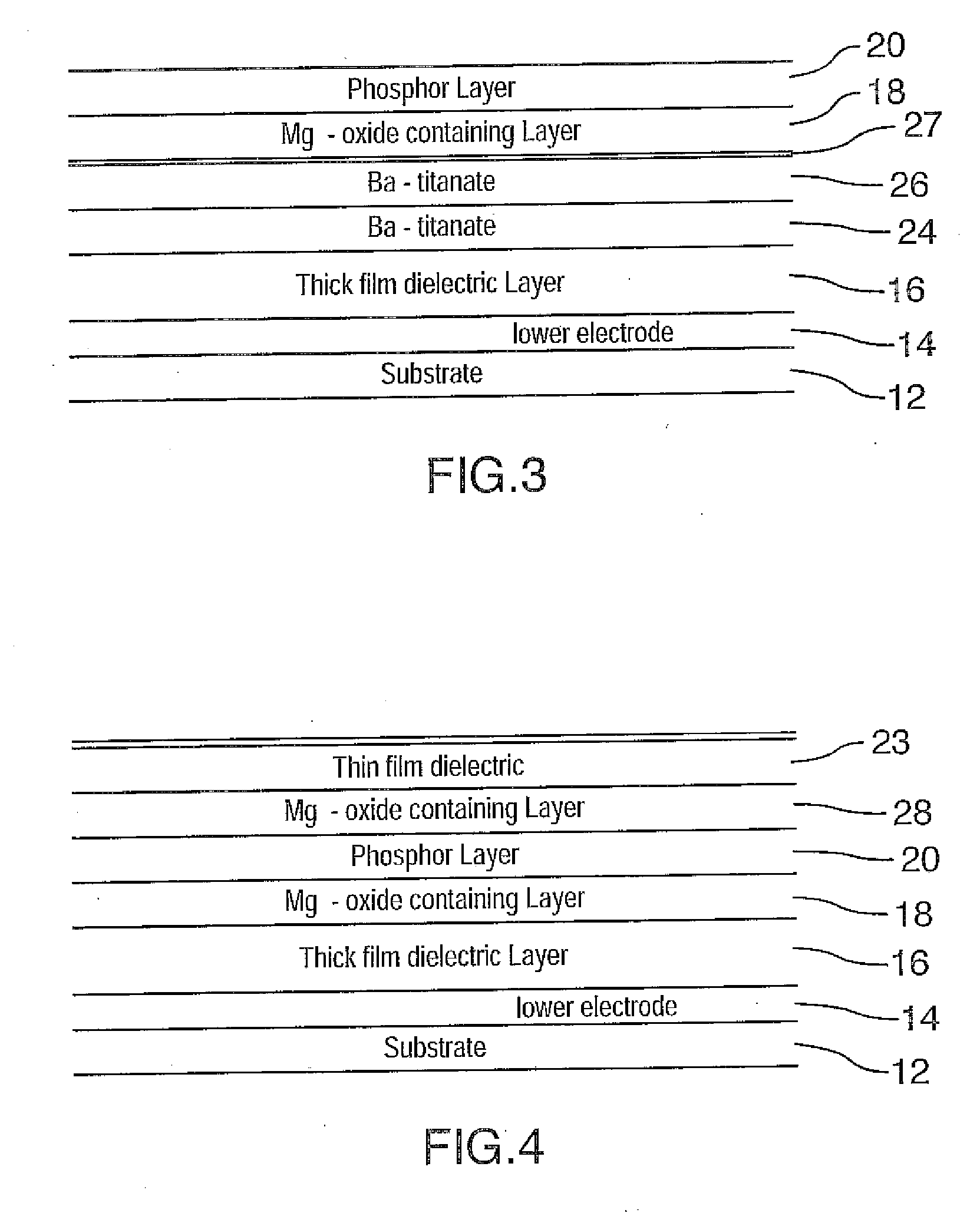Magnesium oxide-containing barrier layer for thick dielectric electroluminescent displays
- Summary
- Abstract
- Description
- Claims
- Application Information
AI Technical Summary
Benefits of technology
Problems solved by technology
Method used
Image
Examples
example 1
[0073] This example serves to illustrate the performance and operating stability of devices of the prior art. A thick dielectric electroluminescent device incorporating thin film phosphor layers comprising barium thioaluminate activated with europium was constructed. The thick film substrate was comprised of a 5 cm by 5 cm glass having a thickness of 0.1 cm. A gold electrode was deposited on the substrate, followed with a lead magnesium niobate-titanate thick film high dielectric constant dielectric layer and a PZT smoothing layer in accordance with the methods exemplified in Applicant's co-pending International Patent Application WO 00 / 70917 filed May 12, 2000. A thin film dielectric layer consisting of barium titanate with a thickness of about 170 nanometers was deposited in accordance with the methods exemplified in U.S. Pat. No. 6,589,674 (the entirety of which is incorporated herein by reference). A second thin film layer consisting of barium tantalate with a thickness of 50 na...
example 2
[0075] This example serves to illustrate the benefit of the invention. A device was constructed similar to that of example 1, except that a 37 nanometer thick magnesium oxide layer was sputter deposited on top of the alumina layer prior to phosphor deposition. The luminance data for this device tested under the same conditions as for the device of example 1 is also shown in FIG. 6 (solid diamonds) and shows an initial luminance of about 173 candelas per square meter, followed by a slow rate of luminance loss. The luminance after 1100 hours of operation was still about 87 candelas per square meter.
example 3
[0076] This example serves to illustrate the benefit of the invention to improve operating stability in an electroluminescent device with a different phosphor composition. FIG. 7 shows the luminance as a function of operating time for a device similar to that of example 2 except that it had a phosphor composition with a europium concentration of about 6 atomic percent of europium with respect to barium (open circles). FIG. 7 also shows the luminance as a function of operating time for a similar device with a 37 nanometer thick magnesium oxide layer between the alumina layer and the phosphor layer. The initial luminance of these two devices was very similar at about 100 candelas per square meter). The luminance of the device without the magnesium oxide layer dropped to 48 candelas per square meter after 570 hours of operation, while the luminance of the other device with the magnesium oxide layer was still above 80 candelas per square meter after 1400 hours of operation.
PUM
 Login to View More
Login to View More Abstract
Description
Claims
Application Information
 Login to View More
Login to View More - Generate Ideas
- Intellectual Property
- Life Sciences
- Materials
- Tech Scout
- Unparalleled Data Quality
- Higher Quality Content
- 60% Fewer Hallucinations
Browse by: Latest US Patents, China's latest patents, Technical Efficacy Thesaurus, Application Domain, Technology Topic, Popular Technical Reports.
© 2025 PatSnap. All rights reserved.Legal|Privacy policy|Modern Slavery Act Transparency Statement|Sitemap|About US| Contact US: help@patsnap.com



